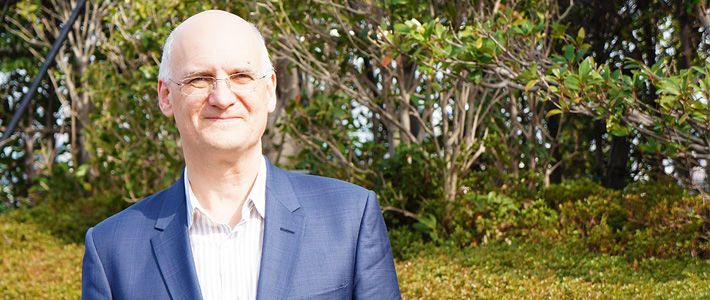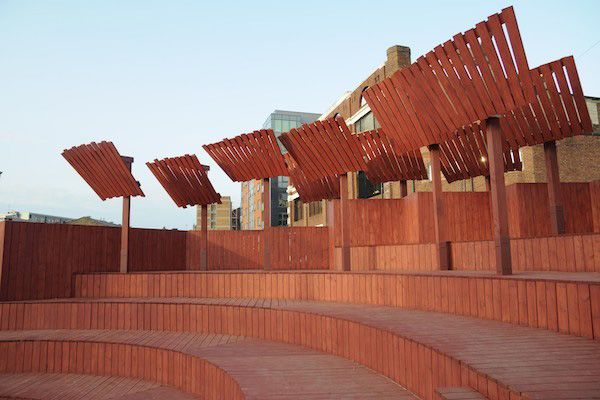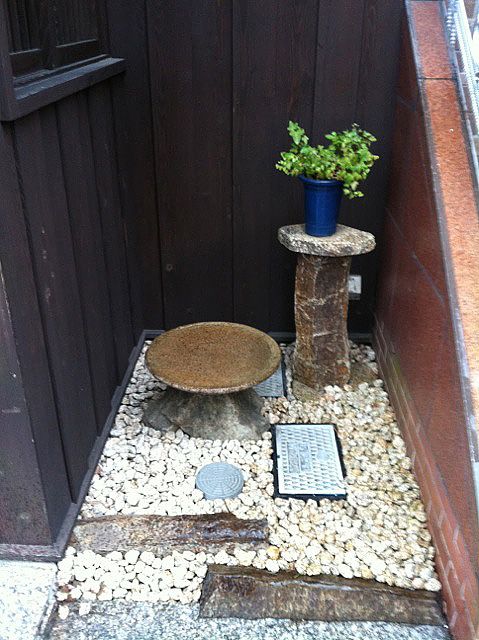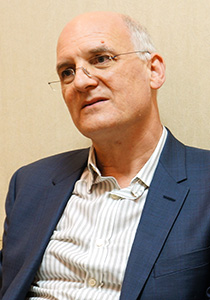
Crusading for Beauty: Lewis Biggs, Curator of the Aichi Triennale
Culture- English
- 日本語
- 简体字
- 繁體字
- Français
- Español
- العربية
- Русский
“I’m very interested in the idea that art is needed. It is not a luxury.”
It is an early spring morning in Nagoya, and I have come to talk to Lewis Biggs about the commitment to incorporating art into people’s everyday lives that has brought him from his native Britain to curate this year’s Aichi Triennale.
Japan’s fourth-biggest city, Nagoya is the capital city of Aichi Prefecture, around 250 kilometers west of Tokyo—a journey of 1 hour 40 minutes on the bullet train from Tokyo. Together with its close neighbor Okazaki, Nagoya will host the second Aichi Triennale between August 10 and October 27, 2013.
The first Aichi Triennale was held in 2010. Among the attendees was Lewis Biggs, a British curator who was director of the Liverpool Biennial from 2000 to 2011. During his stay in Japan, he met Igarashi Tarō, the artistic director of the Triennale, who invited him to return this year as one of the team of four curators. I meet with Biggs before a press conference at the Aichi Arts Center, a labyrinthine building that will be the principal hub for the prefecture-wide festival.
Biggs brings a wealth of important experience to his post. In Britain, arts and culture became an increasingly important part of urban regeneration programs in the 1980s, as cities sought solutions to the problems brought about by economic restructuring and the decline of traditional manufacturing industry. One of the most prominent examples is the story of Liverpool, a city in the northwest of England, where Biggs worked for over a decade as a director of the Tate Liverpool and as a founding director of the Liverpool Biennial.
Recalling Artwork from the Liverpool Biennial
Biggs and the Liverpool Biennial played a key role in winning Liverpool the title of European Capital of Culture 2008. How did Biggs bring success to the Liverpool Biennial, and how will he be replicating some of that in Aichi?
“I was extremely concerned with how to bring art to the people of Liverpool. After a while, I began to realize that the museum itself was part of the problem. For most people, the history of art and the art itself are not particularly relevant to their everyday lives. Some people make a special place for art in their lives and they’re happy to go to a museum to find that. But for many people that’s not the case. I realized the best thing I could do for it was take it out of the museum. Before I left Tate Liverpool, we began to experiment with showing art outside the museum, in the city.”
Bringing the art out onto the streets was a strong feature of the Liverpool Biennial, and the previews of the Aichi Triennale suggest that the same idea will feature prominently in Nagoya and Okazaki too. One example from the Liverpool Biennial was Rockscape, a piece by Atelier Bow-Wow—a duo made up of Japanese artists Tsukamoto Yoshiharu and Kaijima Momoyo.
 Rockscape by Atelier Bow-Wow at the Liverpool Biennial (Photo provided courtesy of Liverpool Biennial.)
Rockscape by Atelier Bow-Wow at the Liverpool Biennial (Photo provided courtesy of Liverpool Biennial.)
“They saw a site that had been abandoned for many years. It was a bomb site. It’s at a key location in the city, where two axes of the city cross. They turned it into an amphitheater for watching the street—with no program, just sitting and watching the street.
“I’m sad to say that the city planners have not yet managed to turn the experience into something significant. It’s been left as a bomb site and hasn’t been developed in any way. I don’t consider this as a failure; I consider it as-yet unrealized potential!”
 Another Place, by Antony Gormley (Photo provided courtesy of Liverpool Biennial.)
Another Place, by Antony Gormley (Photo provided courtesy of Liverpool Biennial.)
Biggs cites Antony Gormley’s seaside beach sculpture Another Place as another example of an artwork that has had a major impact.
“This is an example of an artwork that has done very well in altering external perception to produce inward investment and make a difference to the economy and local tourism. It involved placing a hundred cast iron figures on the beach, over a kilometer and a half of beach space. The image of that artwork has been used in order to sell the northwest of England both to businesses and to tourists. There are estimates that it has doubled the local economy [around Crosby beach].”
“Crosby beach was the last piece of England that emigrants would see. Many millions passed through Liverpool on their way to the New World. It’s at the mouth of the River Mersey. It’s a memorial for all of those people who left. There is a sense of nostalgia when you see it, but it is also about hope—about aspiration for a better future. We are all looking for another place to go to, in a sense. That aspect of hope is fantastically powerful.”
Bringing It to Aichi
So what about the Triennale in Aichi? The approach of taking the art to public spaces will be used once more. One advantage of this approach is that it inspires curiosity from the public. Casual onlookers get drawn in. This brings the art to people who might not necessarily be looking for it.
Finding areas of cities that can be used for works of art is a challenge, though. Abandoned buildings are a prime target. At the Aichi Triennale, a number of artworks will be installed in a bowling alley that is scheduled for demolition. The artists are therefore free to do as they please with the space.
“There’s something exciting about exploring the inside of a building,” Biggs says, “especially when they are abandoned. Many people came to the Liverpool Biennial because they wanted to see inside a building that they’d never had a chance to see before. This is an urban experience. It’s about public and private. We all love to visit other people’s houses.”
At a press conference held later in the day, some of the Triennale artists appeared on stage to introduce themselves and talk about their work. These included Guerra De La Paz from Miami, and the Portuguese muralist and painter Rigo 23. The artists page on the official Aichi Triennale website features over 80 artists from all over the globe, working either solo or as part of a team. Many artists will be contributing to performing arts events, opera productions, and film programs. One of the biggest names on the lineup is Yoko Ono.
The Most Beautiful Visual Culture in the World?
What was it that persuaded Biggs to come to Japan?
“My first visit to Japan was in 1986 for the Turner exhibition. Since then I’ve tried to keep in touch as much as I can, because Japan has the most beautiful visual culture in the world. You walk down any street in Japan and you find that people have arranged their environment in a visually pleasing way. In another country, you may find things that are aesthetically pleasing, but it’s probably by accident or happenstance. In Japan, it’s deliberate.”
 This photo, which Biggs took on his cell phone, illustrates what he calls “the most beautiful visual culture in the world.”
This photo, which Biggs took on his cell phone, illustrates what he calls “the most beautiful visual culture in the world.”
Biggs is not shy about the missionary aspects of his work. “Ugliness damages people,” he says. “Having to live with ugliness damages people’s psyches. Many cities look like prisons. It’s worth crusading to try and prevent that happening.”
If the Aichi Triennale, and art festivals like it, encourage the creation of more beauty in our environments, it will bring benefits to the whole of society. I look forward to making another visit to the region after the Triennale starts in August.
(Interview recorded on March 22, 2013.)
